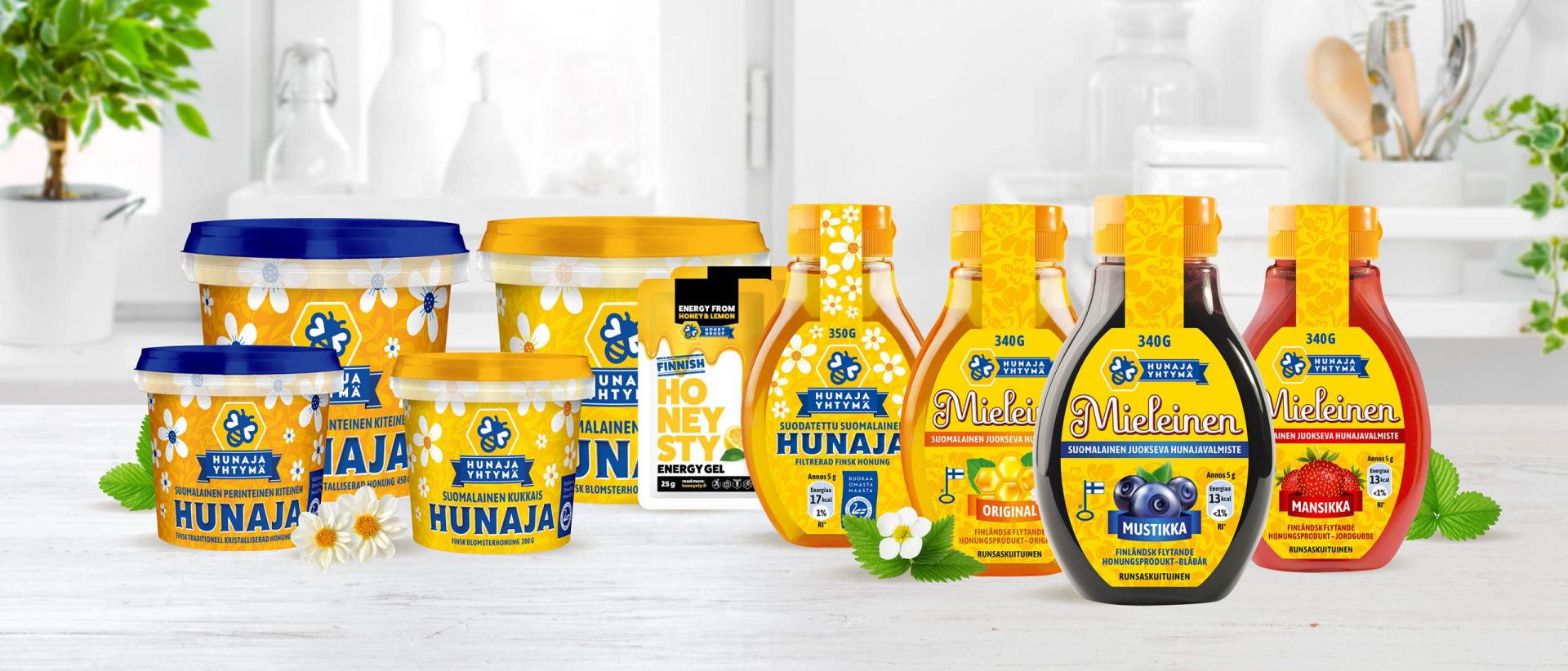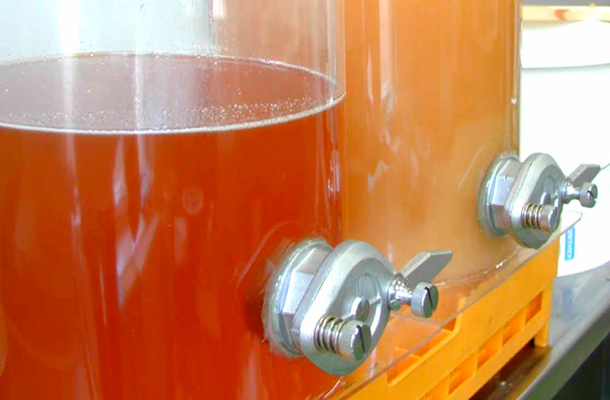Collecting
COLLECTING HONEY
Honey is collected from the beehives at the end of the season (July-August in Finland) by taking the honeycombs out of the beehives and replacing them with empty combs as well as a separate feeder that contains fluid sugar for winter-time nourishment.
The honey is scraped from the honeycombs with a scraping comb or a scraping spatula into a honey extractor where the honey is extracted using centrifugal force. From the extractor, the honey is poured into a straining basin where the specks of wax and other debris are caught and the pure honey filters into the receptacles. This debris-free honey is ready for consumption as such, but the honey that is intended for sale is further churned so that it becomes soft and yielding.
Due to the Finnish climate, the honey bee is not indigenous to Finland. It was brought to Finland at the end of the 1700s for beekeeping purposes. Some runaway swarms of bees do actually survive in Finnish nature, but it is not possible to get honey from their nests. In for instance Africa, however, where wild bees are common, the locations of the tree-trunk nests are known and even wild-bee honey can be collected.
DID YOU KNOW: In comb honey, which is consumed directly from the combs, the natural aromas and flavours are stronger than in collected honey. The wax that has come loose from the comb can either be spat out or swallowed; this wax acts as roughage in the digestive system. Some beekeepers and health-food shops sell comb honey.


